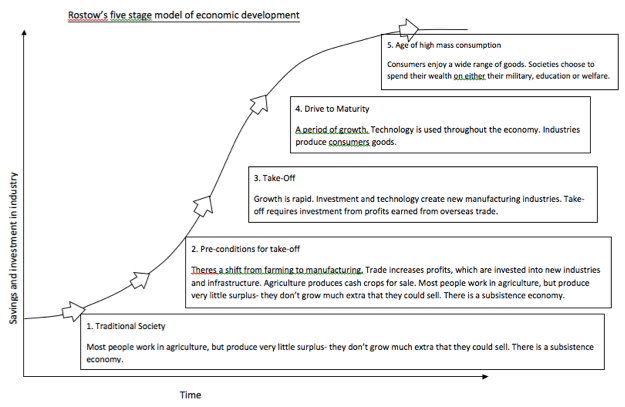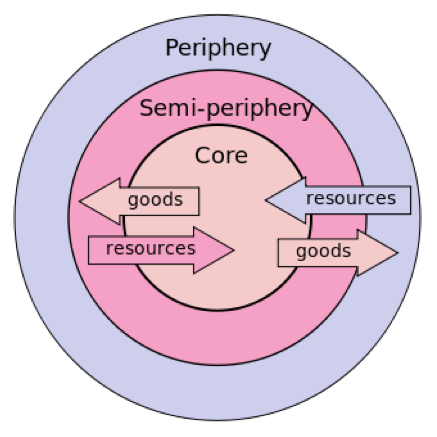Theories of Development
Rostow
 Australia is stage 5 the evidence to support this is large number (2991) of doctors per 100,000, few people working in farming and a large GDP showing a consumer society.
Australia is stage 5 the evidence to support this is large number (2991) of doctors per 100,000, few people working in farming and a large GDP showing a consumer society.
Criticisms:
- It makes the assumption that all countries start at the same level of development
- It disregards the fact that a each country will have different qualities, quantities of resources, population or climate/natural hazards.
- Out of date and based on the 18th and 19th century development of European countries
- Doesn’t take into account that European development came at a cost to other countries (colonisation)
Frank’s Dependency
The dependency theory evolved in the late 1950s and is based around the idea that developed rich countries (core) are limiting the level of development of the poorer countries (periphery) from the control of the world economy. The most developed countries are able to exploit less developed countries through the use of their economic and political power.
The Dependency theory also suggests that the unequal pattern of development has been reinforced by:
The problems with the Dependency theory are:
- Written in the late 1950s so it is out of date.
- Natural disasters, lack of resources, conflict are just a few examples of things which may limit development that isn’t taken into consideration in the Dependency theory.

